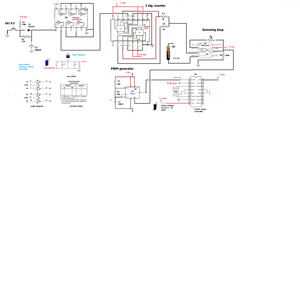Op-amps are like analog building blocks; you can create almost anything with them. Today, we’ll learn how to use these versatile components, alone and with an Arduino.
Operational Amplifiers, or “op-amps,” were initially designed for use in analog computers back in the 1940s. In fact, the “operational” in the name is a reference to the op-amp's ability to perform mathematical operations on voltages, which is how analog computers represent numbers.
Op-amps have been available in integrated circuit (IC) format for nearly 60 years and have become a vital component in analog electronic design. There are two reasons for their popularity:
1 - They are versatile - Op-amps can be configured into dozens of basic circuits.
2 - They are inexpensive - Op-amps are pretty cheap! One of the devices we will look at today costs about 10 cents per op-amp.
You can also use operational amplifiers to “glue” analog and digital electronics; in fact, one of the demos today uses an op-amp with an Arduino.
Aside from that, we’ll also learn how op-amps work, how to configure them into several basic “analog building block” circuits, how to build a light-sensitive switch using them, and how to turn a single power supply into a dual one using an op-amp.
Here is the Table of Contents for today's video:
00:00 - Introduction
02:20 - Operational Amplifiers
12:14 - Popular Op-Amps
16:17 - Op Amp Basic Circuits Hookup
18:32 - Voltage Follower (Buffer)
21:03 - Inverting Amplifier
22:36 - Non-Inverting Amplifier
24:06 - Low-Pass Filter
25:53 - High-Pass Filter
27:33 - Square & Triangle Wave Generator
29:22 - Op Amps with Arduino
34:58 - Light-Sensitive Switch
38:00 - Single to Dual Power Supply
42:13 - Conclusion
One other thing to note is that “classic” components, like op-amps, didn’t seem to be affected by the global chip shortage. One more reason to consider using them in your designs!
Hope you enjoy the video.
Bill
"Never trust a computer you can’t throw out a window." — Steve Wozniak
Nice refresher course on op amps, it brings back memories when I first started to teach myself some electronics. I think I have a little booklet on LM741 circuit ideas somewhere. The last time I used one was as a Schmitt trigger to clean up encoder pulses.
https://forum.dronebotworkshop.com/user-robot-projects/getting-the-motor-encoders-to-work/
Nice refresher course on op amps, it brings back memories when I first started to teach myself some electronics. I think I have a little booklet on LM741 circuit ideas somewhere. The last time I used one was as a Schmitt trigger to clean up encoder pulses.
https://forum.dronebotworkshop.com/user-robot-projects/getting-the-motor-encoders-to-work/
Indeed @robotbuilder, I used a Schmitt trigger hex inverter to de-bounce a circuit that I built to change speeds on a motor with only one bush button..it also incorporates J-K FF as a 2 stg. counter, a 741 op-amp as a summing amp, and a 555 timer as a PWM generator.
I also have a very good tutorial on op=amps, see link: https://www.electronics-tutorials.ws/opamp/opamp_4.html
Op-amps can be sued for many different analog circuits, and are also combined with digital as well..
Regards,
LouisR
LouisR

